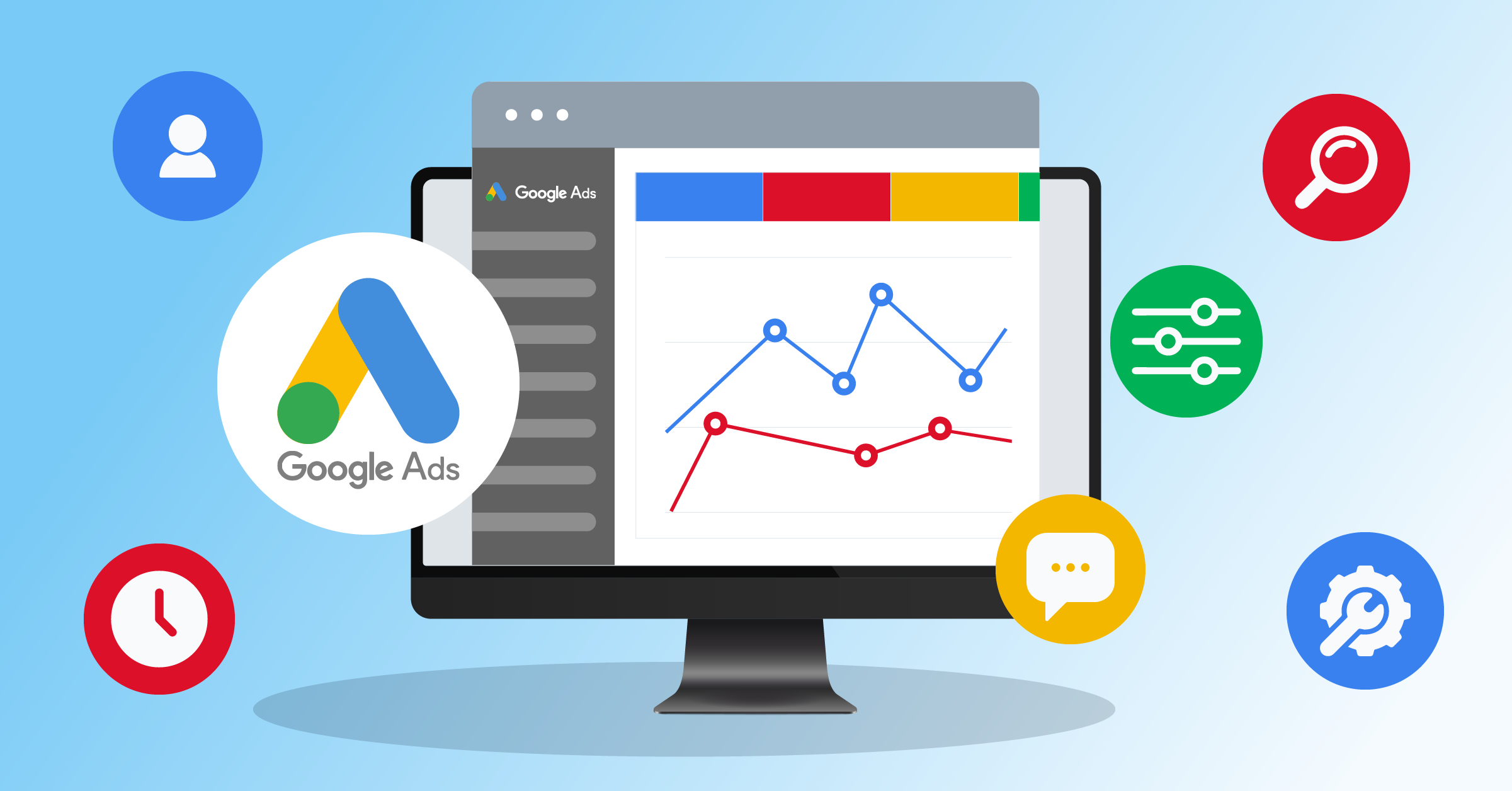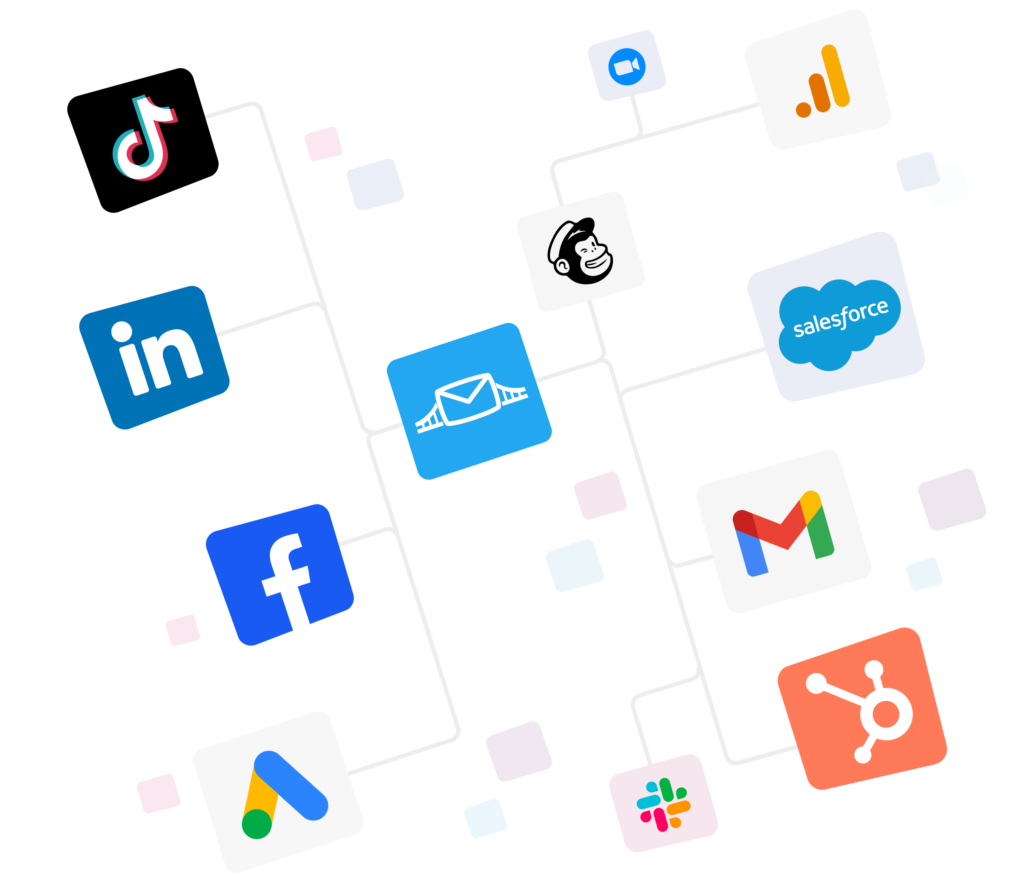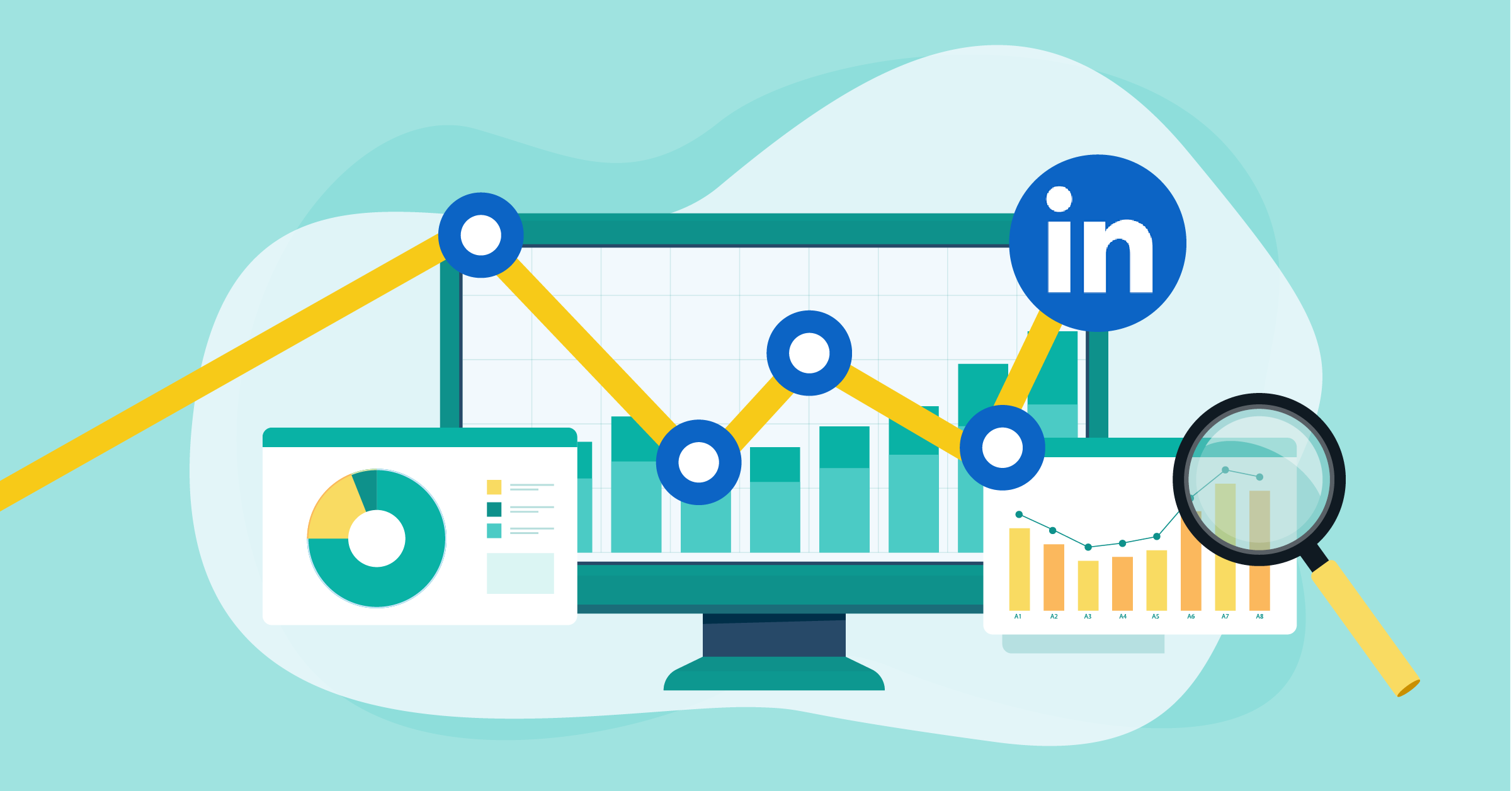
Imagine launching a LinkedIn ad campaign and knowing exactly which actions—whether a form submission, a purchase, or a phone inquiry—are tied directly to your ads. No guesswork, no gaps in tracking, just accurate, real-time data feeding your marketing strategy.
That’s the power of the LeadsBridge integration with LinkedIn Ads.
Thanks to the integration between LeadsBridge and LinkedIn Ads, you’re no longer reliant on cookie-based tracking, which is becoming increasingly unreliable.
Instead, your conversion data flows seamlessly, allowing you to optimize campaigns on the conversions that matter most to your business and ensuring that every marketing dollar is spent wisely.
- What conversions can you track?
- Before you begin: Are you ready for LinkedIn Conversions API?
- Step 1: Creating a New Conversion Event in Your LinkedIn Ad Account
- Step 2: Connecting LinkedIn Conversions API with LeadsBridge
- Step 3: Testing and monitoring your integration
- Best practices for a high-performance integration
- Final thoughts: Make your LinkedIn Ads work smarter
With LeadsBridge, integrating LinkedIn Conversions API with your CRM or marketing platform is simple. This guide walks you through the entire setup, from initial requirements to live tracking. In addition, it introduces tools that can streamline the process once set up, such as:
What conversions can you track?
Beyond tracking standard conversions like form fills, this integration provides additional conversion insights from data sources like your CRM. This can offer a significant advantage to your marketing strategy.
By analyzing aggregated and privacy-compliant data, businesses can uncover industry trends, identify gaps in their own strategies, and make more informed decisions about hiring, partnerships, or market positioning.
Before you begin: Are you ready for LinkedIn Conversions API?
Before diving into the setup, there are a few things to check off your list.
1. Confirm LinkedIn’s Compliance Requirements
Given that you’re likely already handling this data, it’s crucial to involve your legal team early to stay ahead on compliance. LinkedIn offers two key documents that outline the necessary guidelines.
We recommend sharing both agreements with your legal and compliance teams.
2. Verify Your LinkedIn Ad Account Permissions
To successfully create a new conversion event, you will need to be one of the following role types on your LinkedIn Ad Account:
- Billing Admin
- Account Manager
- Campaign Manager
- Creative Manager
If you’ve previously connected your LinkedIn Ad Account to LeadsBridge, you may need to reauthorize it to ensure all required permissions are granted.
Step 1: Creating a New Conversion Event in Your LinkedIn Ad Account
1. Log into LinkedIn Campaign Manager
Head over to LinkedIn Campaign Manager and select the Ad Account where you want to create a new conversion event.
2. Navigate to Conversions
In the top navigation, click on Measurement → Conversion Tracking.
3. Create a Conversion
Click on Create a Conversion and select Conversion API.

Give your new conversion event a descriptive name (e.g., “Newsletter Signups,” “Demo Requests,” or “Product Purchases”).
4. Configure conversion details
- Conversion Type: Select the type of action you want to track (e.g., Lead, Purchase, Download).
- Value and Currency: If relevant, you can assign a monetary value to the conversion.
- Attribution Window: Choose an appropriate time frame (e.g., 30 days or longer if you have an extended sales cycle).
If you already know which campaigns should be linked to this conversion, you can add them here. You can always update this later in your Campaign settings.
Once saved, your new conversion event will be ready to receive data from the LinkedIn Conversions API.
Step 2: Connecting LinkedIn Conversions API with LeadsBridge
1. Create a new Bridge
Start by logging into your LeadsBridge account. From the dashboard, select “Create New Bridge”, which will begin the setup process.
2. Select your data source and destination
Every integration needs a source and a destination.
- The source is where your data comes from—this could be a CRM like Salesforce, HubSpot, Pipedrive, or even a simple Google Sheet.
- The destination is LinkedIn Conversions API, where your conversion data will be sent.
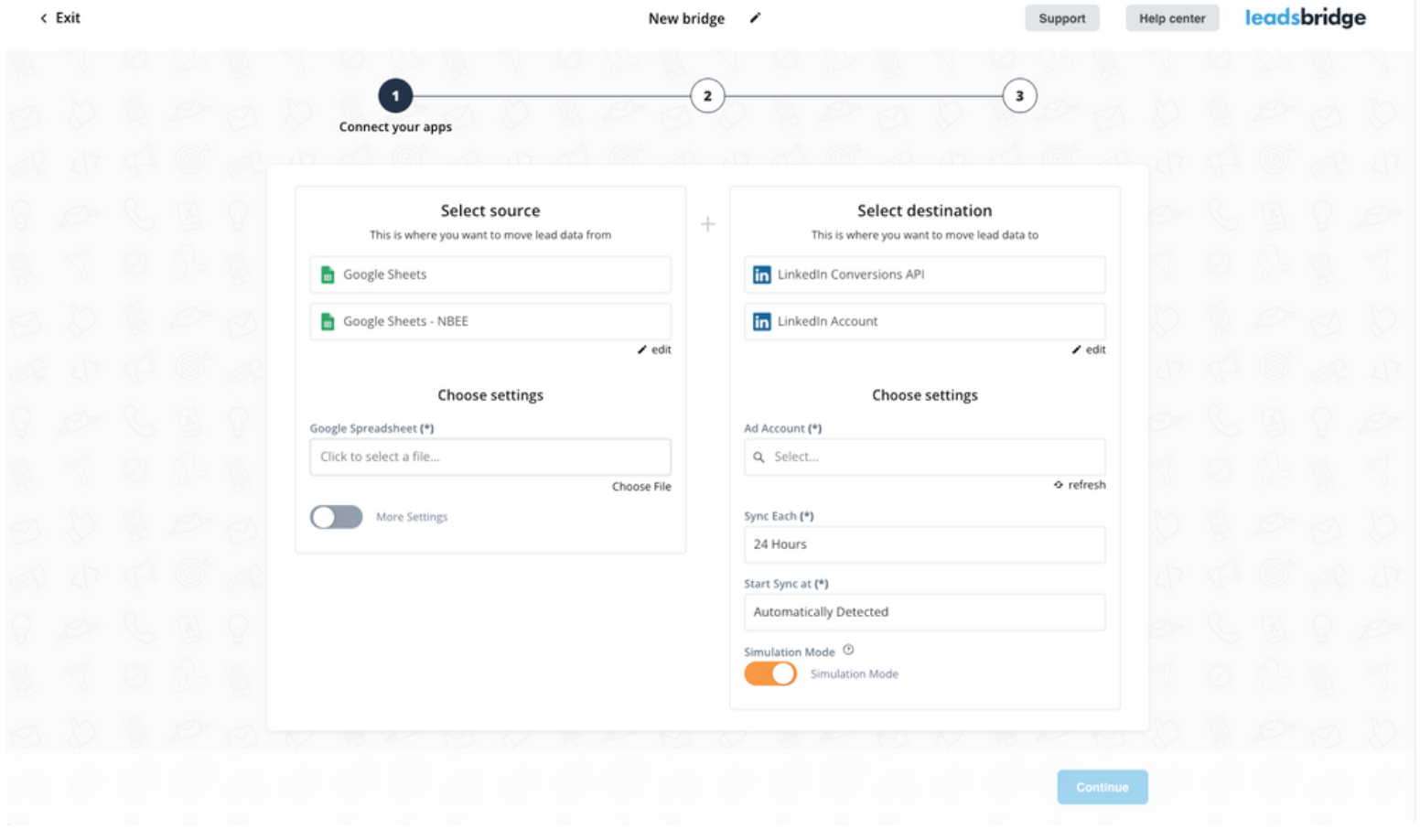
3. Authenticate and connect LinkedIn
Once LinkedIn is selected as the destination, a pop-up window will appear asking you to authenticate your LinkedIn Ads account. Click “Authorize” to grant LeadsBridge the necessary permissions.
4. Configure your bridge
Now it’s time to define how your conversion data will be processed.
- Select Your LinkedIn Ad Account to associate the integration with your campaigns.
- Create a Conversion Rule, naming it based on the action you want to track (e.g., “Lead Form Submissions” or “Web Purchases”).
- Choose Your Auto Association Type—you can either allow LeadsBridge to automatically associate conversions with campaigns or manually select which ones to include.
- Define the Conversion Event Type—this could be a Lead, Purchase, Sign-up, or another key action relevant to your business.
- Set an Attribution Window, determining how far back LinkedIn should look to associate a conversion with an ad interaction. We recommend at least 30 days, if not longer. This is dependent on the length of your sales cycle.
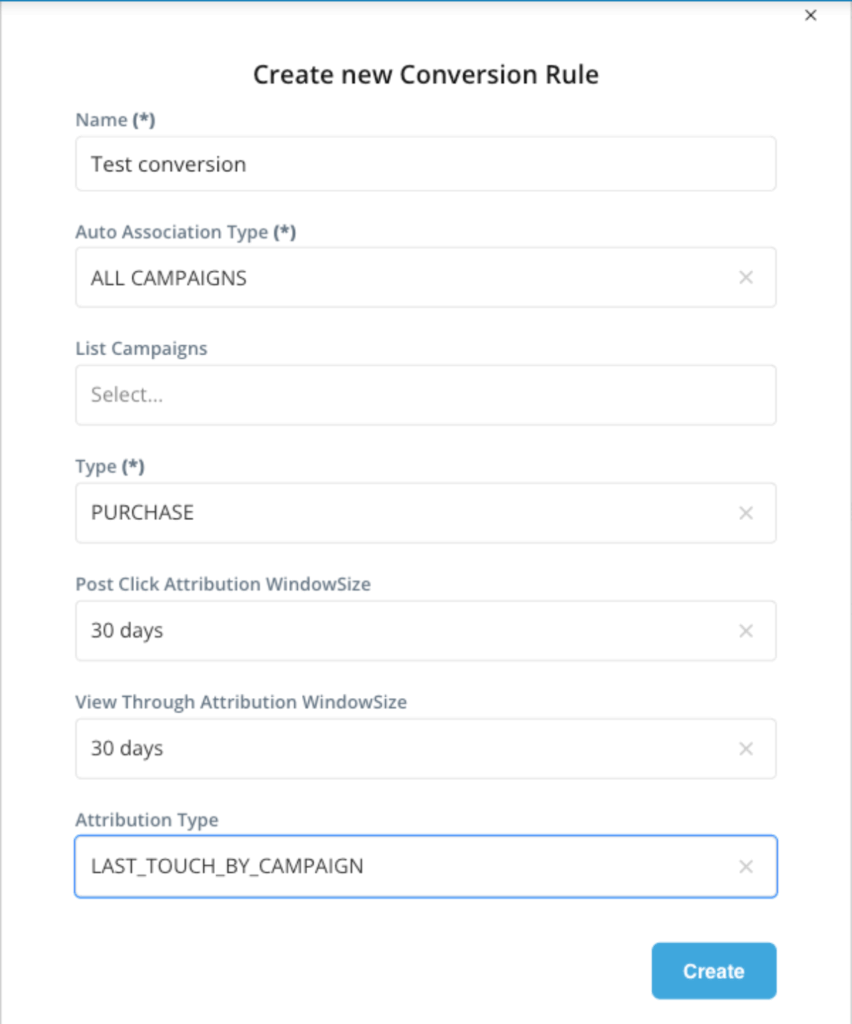
5. Map your data fields
To ensure accurate tracking, you need to match your CRM fields with LinkedIn’s required parameters.
At a minimum, map at least one of the following:
- Email (SHA256 hashed)
- LinkedIn First-Party Ads Tracking UUID
- Acxiom ID
If available, add additional identifiers like first name, last name, company name, job title, and country code to improve match rates.
You can also apply filters to segment your audience, ensuring only the most relevant data is sent to LinkedIn.
6. Set sync frequency and publish
- Decide how often LeadsBridge should sync your data—every few hours or once per day.
- Run a Simulation Mode to test everything before switching to live syncing.
- Once verified, Save & Publish your bridge.
If you are having trouble with the process you can check our documentation here.
Step 3: Testing and monitoring your integration
After setup, it’s time to make sure everything is working as expected.
1. Send a test conversion
Manually create a test lead in your CRM and check if it appears in LinkedIn Campaign Manager under Analyze → Conversion Tracking.
To see when LinkedIn last received conversion data, hover over the “Active” status in Campaign Manager.
2. Monitor performance in LinkedIn Campaign Manager
Navigate to Advertise → Add Column “Conversions & Leads” → Breakdown Conversions to track incoming conversions.
It may take a few hours for data to appear, so be patient.
3. Switch from Simulation to Live Sync
Once you’ve confirmed that data is flowing correctly, change the bridge mode from Simulation to Live Sync. From this point on, all conversions will be sent to LinkedIn automatically.
Best practices for a high-performance integration
Provide more data for better match rates
LinkedIn’s algorithm performs better when you supply multiple identifiers. In addition to email addresses, consider including:
- LinkedIn First-Party Ads Tracking UUID
- Acxiom ID
- LeadGenFormResponseUrn (for LinkedIn Lead Gen Forms)
- Custom External Identifiers
Enable enhanced conversion tracking & deduplication
To get the most complete view of the customer journey:
- Use both the LinkedIn Insight Tag and Conversions API to prevent duplicate conversions.
- Enable click ID tracking to improve attribution accuracy.
Optimize your conversion windows
Choosing the right time window for conversions increases accuracy.
- For lead generation → 90-day click, 90-day view
- For website actions → 30-day click, 7-day view
- For long sales cycles → Up to 365-day conversion window
Associate conversions with multiple campaigns
More campaigns linked to conversion tracking mean better insights and improved optimization.
Final thoughts: Make your LinkedIn Ads work smarter
The LinkedIn Conversions API isn’t just a tracking tool. It’s a game-changer for marketers who want to make data-driven decisions. By integrating it with LeadsBridge, you eliminate tracking blind spots and ensure that your LinkedIn ad budget is spent on what truly works.
If you’re ready to take control of your LinkedIn conversion tracking, now is the time to act.
Start your integration today: LeadsBridge LinkedIn Conversions API Integration.
Need assistance? Our team is ready to help.







